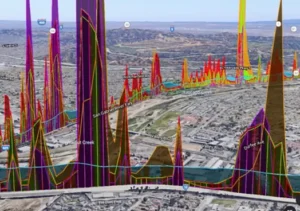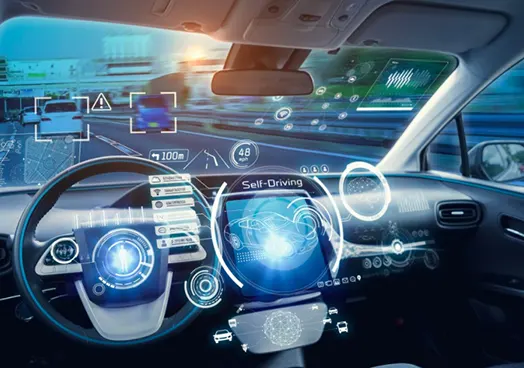
Environmental, Social, and Governance (ESG) becomes more and more important by the day. Businesses, fleet teams, automotive testing engineers, and original equipment manufacturers: it’s in our best interest to keep your team’s emissions measurement tools and systems up to date to meet local and federal regulations.
But where do we start? Yes, how do we monitor emissions for ESG reporting?
The ever-evolving landscape of emissions testing can be confusing. We’re here to make your lives easier.
At GlobalMRV, we’re one of the leading portable emissions measurement system (PEMS), integrated PEMS (iPEMS), and mini-PEMS providers for emissions monitoring and verification for ESG reporting.
Whether you’re looking to submit ESG reports for automotive, motorcycle, heavy-duty equipment, marine, or other internal combustion engine (ICE) or hybrid-engine-powered equipment, GlobalMRV’s powertrain engineers, PhD. researchers, technicians, and analysts can help you stay in compliance with regulations and keep your emissions at an all-time low.
Whether your goal is to measure particulate matter (PM) from your ICE, hybrid, or hydrogen engine, you’ll need to have a firm grasp of ESG reporting and regulations. Join us!
In this blog, we’ll explore the relationship between real-driving emissions (RDE) monitoring and the world of ESG reporting, so you and your business can be well on your way to a cleaner, brighter, and more profitable future.
What are Real Driving Emissions (RDE) monitoring and ESG reporting?

Real driving emissions (RDE) testing refers to emissions tests that gauge the number of pollutants — like nitrogen oxide — emitted by vehicles while driven on the road. Many corporations are required to report the environmental and social impacts of their products and processes to provide stakeholders with transparency about operations.
IESG strategy refers to reporting data about a company’s environmental practices. The hope is to give stakeholders a window into operations, as well as inspire other companies to do the same.
With more data about a company’s operations, stakeholders can better assess a company’s carbon footprint and therefore make more informed investment and business decisions. Plus, with more information available, companies can work together to create a cleaner and greener future for the entire planet.
What’s more, with legislation like the Climate Corporate Data Accountability Act (CCDAA) and Climate-Related Financial Risk Act (CRFRA), companies will find themselves under greater pressure and scrutiny to consult with and create more sustainable emissions solutions to meet local and federal requirements.
The data gleaned from portable emissions verification systems involved with ESG will play a larger role in a company’s overall business strategy. Whether small or large, businesses will want to learn about the level of scope 1, 2, and 3 emissions involved in their operations.
We’ll dive into what scope 1, 2, and 3 emissions are in the following sections.
The three greenhouse gas (GHG) emissions for ESG reporting
No discussion of ESG reporting is complete without looking first at GHG and carbon emissions. When it comes to carbon emissions monitoring, verification, and reporting, three types of greenhouse gas emissions are commonly discussed in ESG reports. These emissions include:
- Scope 1 emissions
- Scope 2 emissions
- Scope 3 emissions
1. Scope 1 emissions

Scope 1 emissions refer to carbon emissions that are emitted from a company and any entity a company controls. Scope 1 emissions are often broken down into four main combustion and emission categories.
- Stationary combustion: sources that produce greenhouse gasses from fuels and heat.
- Mobile combustion: greenhouse gas emissions emitted from vehicles owned or controlled by the company.
- Fugitive emissions: emissions from equipment like refrigerators and HVAC units.
- Process emissions: emissions resulting from manufacturing or other industrial processes.
Fleet operators and vehicle manufacturers are responding to the challenges of ESG reporting for scope 1 emissions in various ways.
For example, many companies are opting to drive “green fleets” and other types of vehicles using alternative fuels, electrification, and other emissions reduction strategies. Many companies are also investing a greater share of their resources into conducting energy efficiency audits on these renewable fuel-powered vehicles.
Scope 1 emissions are often a primary focus for businesses and their ESG reporting efforts. Initial efforts often focus on cutting scope 1 GHG gas emissions and nitrogen oxides (NOx) by reducing fuel consumption and maximizing efficiency.
2. Scope 2 emissions

Scope 2 emissions refer to emissions stemming from the purchase of energies like electricity, steam, heat, or cooling. This energy may come from a third party or other utility-related company.
Nevertheless, though not generated on-site, these GHGs are included in ESG reports, as scope 2 emissions make up a company’s total reported energy expenditure.
3. Scope 3 emissions

Scope 3 emissions are more comprehensive — and a bit trickier to define. These emissions include any emissions linked to a company, up and down its chain of operations.
Product use, outsourced activities, production of purchased materials, waste disposal, and travel by vehicle or plane all constitute scope 3 emissions. The effects of a customer using a product, the process of buying and transporting products, and even the extraction of raw materials in the manufacturing process also fall under the category of scope 3 emissions.
The all-encompassing nature of this category makes the source of scope 3 emissions trickier to pin down. While controlling hydrocarbon and GHG emissions can be a challenge, many solutions exist in the quest to reduce GHGs and provide comprehensive ESG reporting to regulators and stakeholders.
RDE technologies: paving the way for better ESG reporting

As legislators hold businesses accountable for reporting the climate impact of their operations, finding the right technologies has become more important than ever.
Real-driving emissions (RDE) technologies appear to be a promising candidate in the fight to help both companies and legislators create a greener, cleaner planet. There are several benefits of using portable RDE solutions to help companies better track and manage GHG emissions.
Benefits of RDE technologies like PEMS, iPEMS, and mini-PEMS

Using the latest RDE technologies for real-time on-road emissions data acquisition and analytics enables companies to have a better understanding of a company’s fleet emissions profile. RDE technologies ensure that stakeholders understand the thinking and values that drive a company’s organization.
For example, regulators can rest easy knowing that companies stay in compliance with legislation. RDE technologies offer several benefits. In general, the benefits of using RDE technologies include:
- Gaining a fuller understanding of the baseline GHG emissions emitted from existing vehicle fleets. RDE technologies like PEMS, iPEMS, and mini-PEMS help companies track, monitor, report, and verify overall CO2 composition, CO2 emissions per mile, and CO2 emissions per vehicle.
- Data management solutions providing metrics, datasets, and baseline KPIs to assist in company processes. These metrics provide key insight into the sustainability of a business’ operations.
- Making more accurate estimates of new or potential emissions reduction technologies
- Providing reliable and contemporary datasets for assessing future fleet needs within a company
- Delivering comprehensive data to be used for greater transparency in self-reporting (or to meet regulatory requirements)
- Ensuring greater accuracy in detecting and predicting vehicle/vehicle system failures
- Pre-empting potential violations, adopting sound internal systems of control, and building and maintaining a more sustainable, greener fleet
- Better defining sustainability-focused metrics and measures
- Spearheading leadership and change management principles in the service of better compliance
- Using and tracking alternative fuel types to support ambitious sustainability goals and practices
- Acquiring a sustainable fleet and achieving strategic mobility concepts and practices
An ESG strategy that includes RDE can help improve a company’s standing with investors, partners, and customers. A comprehensive ESG strategy with RDE will also help deliver significant cost savings, more fuel-efficient solutions, and improved driver comfort.
Many businesses offer RDE technologies on a per-diem basis, allowing businesses to continue to make progress on ESG reporting without making an expensive purchase to do so. Hardware as a Service (HaaS) PEMS rentals is a lucrative, cost-efficient way to continue to track and curb the effect of greenhouse gas emissions in tandem with comprehensive ESG-reporting strategies for vehicle emissions monitoring.
GlobalMRV: revolutionizing the way businesses do emission reporting

When it comes to ESG reporting, real-driving emissions (RDE) testing can be your company’s best friend in Environmental, Social, and Governance (ESG) reporting. RDE solutions like portable emissions measurement systems (PEMS), integrated PEMS (iPEMS), and mini-PEMS help businesses track, report, and verify the number of greenhouse gasses (GHG) and pollutants originating in a vehicle’s engine with unparalleled accuracy and reliability.
Whether you’re tackling scope 1, 2, or 3 emissions, GlobalMRV’s industry-leading RDE solutions and efficient PEMS units can help you stay ahead of the curve on all your ESG needs. Having collected and analyzed over 3,000 hours of reliable data and helped save OEMs and companies more than $5,000,000 on traditional dynamometer and real driving emissions (RDE) testing in the last 5 years alone, we invite you to come get to know us.
To learn if PEMS and RDE testing is the right solution for you and your business, contact us today.